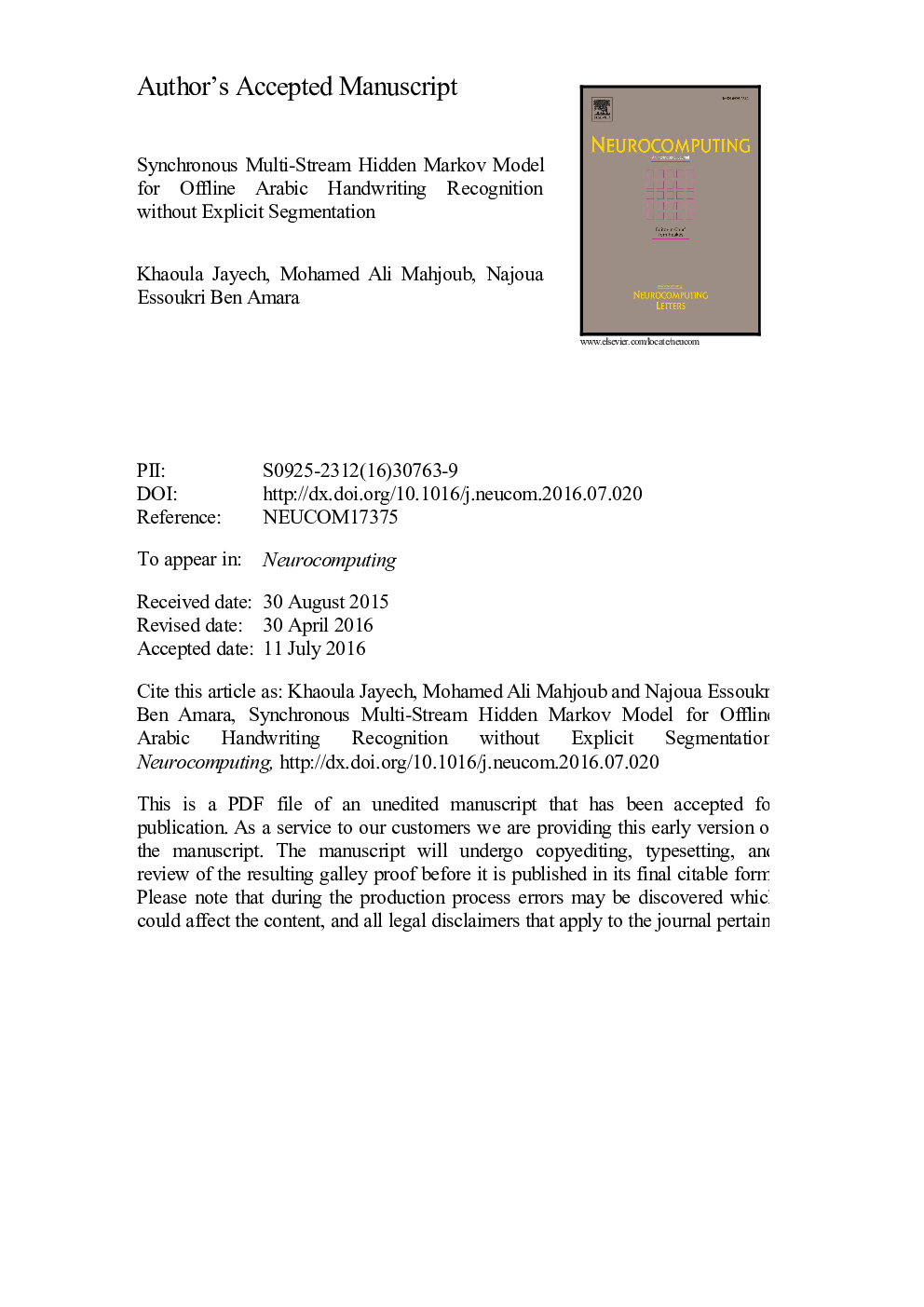| Article ID | Journal | Published Year | Pages | File Type |
|---|---|---|---|---|
| 4948491 | Neurocomputing | 2016 | 32 Pages |
Abstract
Arabic handwriting recognition is still a challenging task due especially to the unlimited variation in human handwriting, the large variety of Arabic character shapes, the presence of ligature between characters and overlapping of the components. In this paper, we propose an offline Arabic-handwritten recognition system for Tunisian city names. A review of the literature shows that the Hidden Markov Model (HMM) adopting the sliding window approach are the mainly used models, which gives good results when a relevant feature-extraction process is performed. However, these models are utilized especially to model one dimensional signal. Consequently, to model bi-dimensional signals or multiple features, a solution based on combining multi-classifiers and then a post-treatment selecting the best hypothesis is applied. The problem considered in this case consists in searching the best way to combine the contribution of these classifiers. In this study, we put forward an extension of the HMM, which can surmount this problem. Our proposed system is based on a synchronous multi-stream HMM which has the advantage of efficiently modelling the interaction between multiple features. These features are composed of a combination of statistical and structural ones, which are extracted over the columns and rows using a sliding window approach. In fact, two word models are implemented based on the holistic and analytical approaches without any explicit segmentation. In the first approach, all the classes share the same architecture nevertheless, the parameters are different. In the second approach, each class has its own model by concatenating their components models. The results carried out on the IFN/ENIT database show that the analytical approach performs better than the holistic one and that the data fusion model is more efficient than the state fusion model.
Keywords
Related Topics
Physical Sciences and Engineering
Computer Science
Artificial Intelligence
Authors
Khaoula Jayech, Mohamed Ali Mahjoub, Najoua Essoukri Ben Amara,
